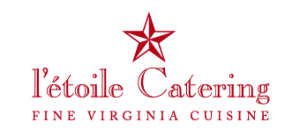Thoughts on Virginia Peanuts

I have been craving Virginia peanuts for many days now, and if I bring them into l’etoile – they do not last long at all. Of course I love out culinary heritage here in Charlottesville and the rest of the state, but the peanut named after our commonwealth are hard to beat.
The peanut plant probably originated in Brazil or Peru, although no fossil records exist to prove this. But for as long as people have been making pottery in South America (3,500 years or so) they have been making jars shaped like peanuts and decorated with peanuts. Graves of ancient Incas found along the dry western coast of South America often contain jars filled with peanuts and left with the dead to provide food in the afterlife.
Peanuts were grown as far north as Mexico by the time the Spanish began their exploration of the New World. The explorers took peanuts back to Spain, where they are still grown. From Spain, traders and explorers took peanuts to Africa and Asia. In Africa the plant became common in the western tropical region. The peanut was regarded by many Africans as one of several plants possessing a soul.
When Africans were brought to North America as slaves, peanuts came with them. Slaves planted peanuts throughout the southern United States (the word goober comes from the Congo name for peanuts – nguba). In the 1700’s, peanuts, then called groundnuts or ground peas, were studied by botanists and regarded as an excellent food for pigs. Records show that peanuts were grown commercially in South Carolina around 1800 and used for oil, food and a substitute for cocoa. However, until 1900 peanuts were not extensively grown, partially because they were regarded as food for the poor, and because growing and harvesting were slow and difficult until labor-saving equipment was invented around the turn of the century.
The first notable increase in U.S. peanut consumption came in 1860 with the outbreak of the Civil War. Northern soldiers, as well as Southern, used the peanut as a food. During the last half of the 19th century, peanuts were eaten as a snack, sold freshly roasted by street vendors and at baseball games and circuses. While peanut production rose during this time, peanuts were harvested by hand which left stems and trash in the peanuts. Thus, poor quality and lack of uniformity kept down the demand for peanuts.
In the U.S., peanuts are used in candies, cakes, cookies, and other sweets. They are also enjoyed roasted and salted. Peanut butter is one of the most popular peanut-based foods in the U.S., and for four hundred years, recipes for peanut soup have been present in the South, Virginia in particular. In some southern portions of the U.S., peanuts are boiled for several hours until soft and moist. Peanuts are also deep fried, shell and all.
Around 1900, equipment was invented for planting, cultivating, harvesting and picking peanuts from the plants, and for shelling and cleaning the kernels. With these mechanical aids, peanuts rapidly came into demand for oil, roasted and salted nuts, peanut butter and candy. George Washington Carver began his research into peanuts in 1903 at Tuskeegee Institute. Research that would lead him to discover improvements in horticulture and the development of more than 300 uses for peanuts (including shoe polish and shaving cream).
Peanuts have many uses. They can be eaten raw, used in recipes, made into solvents and oils, used in make-up, medicines, textile materials, peanut butter, as well as many other uses. Popular confections made from peanuts include salted peanuts, peanut butter (sandwiches, peanut candy bars, peanut butter cookies, and cups), peanut brittle, and shelled nuts (plain/roasted). Salted peanuts are usually roasted in oil and packed in retail-size plastic bags or hermetically sealed cans. Dry roasted salted peanuts are also marketed in significant quantities. Peanuts are often a major ingredient in mixed nuts because of their inexpensiveness compared to Brazil nuts, cashews, walnuts, and so on. Although peanut butter has been a tradition on camping trips and the like because of its high protein content and the fact that it resists spoiling for long periods of time, the primary use of peanut butter is in the home, but large quantities are also used in the commercial manufacture of sandwiches, candy, and bakery products. Boiled peanuts are a preparation of raw, unshelled green peanuts boiled in brine and often eaten as a snack. More recently, fried peanut recipes have emerged – allowing both shell and nut to be eaten. Peanuts are also used in a wide variety of other areas, such as cosmetics, nitroglycerin, plastics, dyes and paints.
The talented botanist recognized the value of the peanut as a cash crop and proposed that peanuts be planted as a rotation crop in the Southeast cotton-growing areas where the boll weevil insect threatened the regions’ agricultural base. Farmers listened and the face of southern farming was changed forever. For his work in promoting its cultivation and consumption, Carver is considered the father of the peanut industry.
Peanut production rose rapidly during and after World Wars I and II as a result of the peanut’s popularity with Allied forces, and as a result of the post-war baby boom.
Today, peanuts contribute over four billion dollars to the U.S. economy each year.



Leave a Reply
Want to join the discussion?Feel free to contribute!